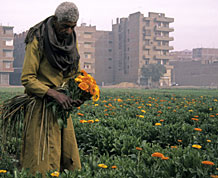CONTEXT

According to estimates of the United Nations and the World Bank, the world is becoming increasingly urban. The report World Urbanisation Prospects released by the UN in 2002 records a significant increase of the percentage of people living in urban and peri-urban areas. In 2007, 50% of the world’s population lived in cities â a number that is expected to rise to almost two thirds by 2030. In Africa and Asia, the urban population will double by 2030, and cities in developing countries will constitute 81% of the total urban population on the planet. One in three city dwellers, totaling a billion people or a sixth of the worldâs population, live in slums. 1
The challenge of such rapid urbanisation is to meet the needs of growing populations with adequate policies and strategies for housing and urban services. In the context of structural adjustment, monetary devaluation and cuts to public expenses, rapid urban growth often leads to an informalisation of the housing sector. Informal building then becomes the fastest option for meeting immediate housing demand.
———————-
1 United Nations Population Fund, 2007: State of World Population 2007: Unleashing the Potential of Urban Growth.
